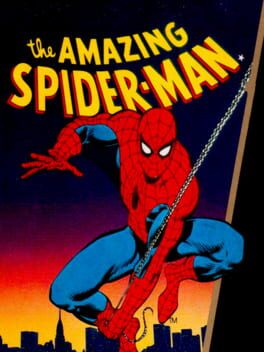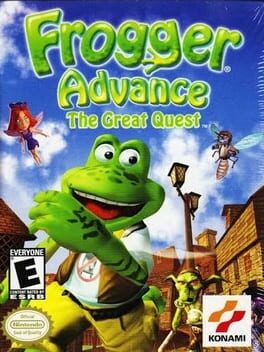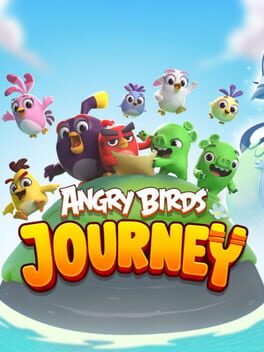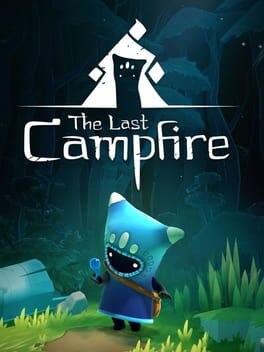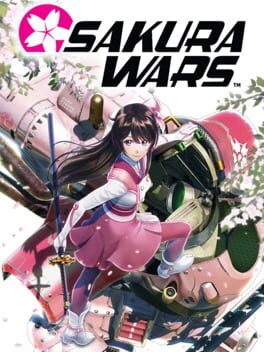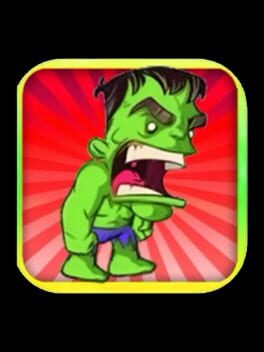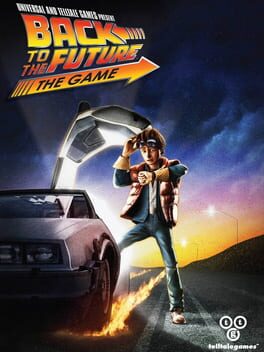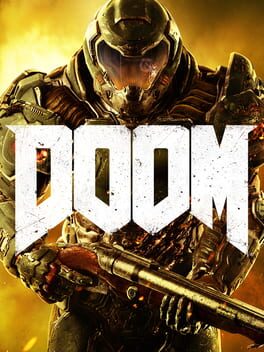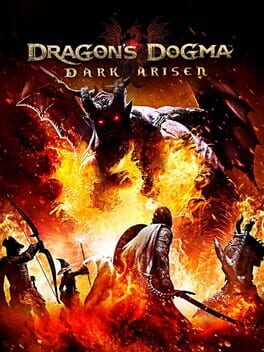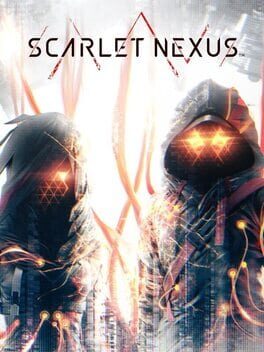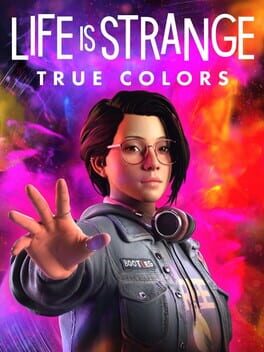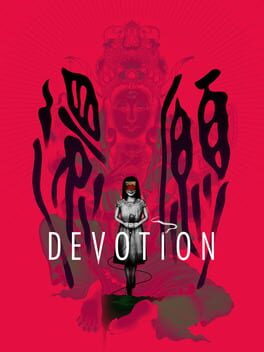TheQuietGamer
4261 Reviews liked by TheQuietGamer
This is my second time playing Frozen Wilds, as a story and gameplay refresher for Forbidden West. This also marked my third time playing through the campaign of Zero Dawn and second starting from a completely fresh save. Unlike my New Game+ run in 2019, this time I integrated Frozen Wilds into the main story, diverting to it as soon as I hit level 30 rather than being terrified of the Scorchers and Fireclaws the way I was on my New Game+ despite starting from such an overpowered position.
While certain aspects of this game haven't aged well, even in the two years since my second run - namely, there's far too many markers on the map, a lot of errands and side quests that aren't very rewarding narratively, some pretty rough facial animation during conversations and on the harder difficulties there are way more ways to get one-shot killed than you might expect - the core combat loop of Horizon is so, so, so goddamn satisfying that none of that matters. In fact, I appreciate how many junk side quests there are if only because it's another excuse to go shred some metal.
For some reason this isn't a universally beloved combat, but for me there's nothing more satisfying than setting all your traps, optimizing your outfit and weapon loadout, sneaking around for a bit capturing or stealth-killing a machine or two and then, suddenly and often without warning, cover's blown and the shit's constantly whipping through the fan. It's exhilarating in a way that never feels cheap (maybe my most disagreeable take) and often inspires a true sense of desperation I often feel held at a distance from in other hard games like, say, Bloodborne. Where a FromSoft game often feels like there's a prescription to its mechanics, so many of Horizon's encounters boil down to "good luck, good hunter" as you retry three or four different times, sometimes honing in on a particular strategy and sometimes altering it completely. The big open spaces help substantially with this, especially when you think you're in a small, intimate encounter with some huge beast only to have suddenly caught the attention of a heard of Broadheads or flock of Glinthawks because you started spamming blast bombs.
But besides all that, Frozen Wilds is an excellent DLC because it hints at a lot of different avenues Guerilla Games will likely take for Forbidden West. There are more fights with companions that have elemental affinities, often but not always in conflict with the enemies you'll be facing, which adds a neat RPG layer as well as offers a little more freedom to improvise because enemies aren't ALWAYS keyed on you. Likewise, animation and cutscene direction is notably improved from the base game despite being released in the same calendar year which should inspire a lot of hope for that side of the game in the sequel.
But more importantly, similar to legendary Mass Effect 2 DLCs Overlord and Shadow of the Power Broker, Frozen Wilds is both integrated into the main game (playing it before the major reveals of the main game will prompt Ashley Burch and Lance Reddick to have extra dialogue concerning how the events in the Ban-Ur relate to the Sundom) in smart ways but additive to the lore of the game without feeling either superfluous or 100% necessary. It's a tough balancing act, much in the same way the primary game's tone wobbles between melodrama and deeply humanistic empathy and humor without ever losing its footing, and quite a joy to experience again.
So...yea. Third time playing this game, really no reason to play a lot of the side quests other than an excuse to play more of the game...so why not dump over 60 hours into this game one more time, just because?
Absolute magic, man.
While certain aspects of this game haven't aged well, even in the two years since my second run - namely, there's far too many markers on the map, a lot of errands and side quests that aren't very rewarding narratively, some pretty rough facial animation during conversations and on the harder difficulties there are way more ways to get one-shot killed than you might expect - the core combat loop of Horizon is so, so, so goddamn satisfying that none of that matters. In fact, I appreciate how many junk side quests there are if only because it's another excuse to go shred some metal.
For some reason this isn't a universally beloved combat, but for me there's nothing more satisfying than setting all your traps, optimizing your outfit and weapon loadout, sneaking around for a bit capturing or stealth-killing a machine or two and then, suddenly and often without warning, cover's blown and the shit's constantly whipping through the fan. It's exhilarating in a way that never feels cheap (maybe my most disagreeable take) and often inspires a true sense of desperation I often feel held at a distance from in other hard games like, say, Bloodborne. Where a FromSoft game often feels like there's a prescription to its mechanics, so many of Horizon's encounters boil down to "good luck, good hunter" as you retry three or four different times, sometimes honing in on a particular strategy and sometimes altering it completely. The big open spaces help substantially with this, especially when you think you're in a small, intimate encounter with some huge beast only to have suddenly caught the attention of a heard of Broadheads or flock of Glinthawks because you started spamming blast bombs.
But besides all that, Frozen Wilds is an excellent DLC because it hints at a lot of different avenues Guerilla Games will likely take for Forbidden West. There are more fights with companions that have elemental affinities, often but not always in conflict with the enemies you'll be facing, which adds a neat RPG layer as well as offers a little more freedom to improvise because enemies aren't ALWAYS keyed on you. Likewise, animation and cutscene direction is notably improved from the base game despite being released in the same calendar year which should inspire a lot of hope for that side of the game in the sequel.
But more importantly, similar to legendary Mass Effect 2 DLCs Overlord and Shadow of the Power Broker, Frozen Wilds is both integrated into the main game (playing it before the major reveals of the main game will prompt Ashley Burch and Lance Reddick to have extra dialogue concerning how the events in the Ban-Ur relate to the Sundom) in smart ways but additive to the lore of the game without feeling either superfluous or 100% necessary. It's a tough balancing act, much in the same way the primary game's tone wobbles between melodrama and deeply humanistic empathy and humor without ever losing its footing, and quite a joy to experience again.
So...yea. Third time playing this game, really no reason to play a lot of the side quests other than an excuse to play more of the game...so why not dump over 60 hours into this game one more time, just because?
Absolute magic, man.
This game is a whole half hour long or so (It took me 27 minutes), so there isn't a lot to say here. I commend Rare for trying to give this game some meat with a unique boss at the end of each world in a bit of a Mega Man style, but it wasn't exactly uncommon on the original Game Boy (Super Mario Land 1 had this as a launch title, let alone many other games) and the fights are fairly bad. They range from stupid simple (stand to the far right vs. Green Goblin and unless you miss hitting him on the pattern you cannot be hit) to extremely frustrating (The final boss, my god). Probably the most annoying thing is that this was a beat 'em up / platformer hybrid, but your attack range feels tiny: I particularly found it difficult to hit bosses without taking damage back, sometimes without it even being during their attack but just due to the hitbox of it being so small that I got too close and got hit. I would not have beaten this game were it not for the fact that when you die and get to full health, boss HPs retain their damage. I was on my very last continue when I won.
Basic enemies have this issue where due to your range, all fights are one of two things: The enemies just run into your fist (the bats in the subway level and some other flying enemies) OR they come at you and due to your range you either have to hit during a small window before they ever attack or get hit, there's very few alternative attacks and the jumping is too chunky to reliably dodge opponents. The low enemy variety also makes it overall boring. The wall climbing segments I think are actually a neat idea, the spidey-sense warning of falling objects as a kind of obstacle course dodging is a good implementation of the idea but they make the obstacles fast enough that you really can't react to it and some randomness in the patterns led to parts where I think I had no choice but to take a hit. It's also too easy to one hit kill yourself by jumping on these parts and I don't know why you have to jump into a window when you reach the top to finish the stage...especially since you always then end up on the rooftop rather than inside. Web-slinging was also inconsistent even once I realized the odd control scheme and led to a pair of unfortunate deaths.
There's only two good things about this game: The music with David Wise on the team is kinda boppin' and the cutscenes are cheesy in an intentional, old Spidey cartoon way that frankly makes them pretty funny. Why does Spider-Man answer the phone in his house dressed as Spider-Man? It's not worth playing the game for but, hey, it is something!
Basic enemies have this issue where due to your range, all fights are one of two things: The enemies just run into your fist (the bats in the subway level and some other flying enemies) OR they come at you and due to your range you either have to hit during a small window before they ever attack or get hit, there's very few alternative attacks and the jumping is too chunky to reliably dodge opponents. The low enemy variety also makes it overall boring. The wall climbing segments I think are actually a neat idea, the spidey-sense warning of falling objects as a kind of obstacle course dodging is a good implementation of the idea but they make the obstacles fast enough that you really can't react to it and some randomness in the patterns led to parts where I think I had no choice but to take a hit. It's also too easy to one hit kill yourself by jumping on these parts and I don't know why you have to jump into a window when you reach the top to finish the stage...especially since you always then end up on the rooftop rather than inside. Web-slinging was also inconsistent even once I realized the odd control scheme and led to a pair of unfortunate deaths.
There's only two good things about this game: The music with David Wise on the team is kinda boppin' and the cutscenes are cheesy in an intentional, old Spidey cartoon way that frankly makes them pretty funny. Why does Spider-Man answer the phone in his house dressed as Spider-Man? It's not worth playing the game for but, hey, it is something!
Not a ton to say about this one, folks. It's a very very easy and very, VERY generic 2D GBA platformer. The level design evolves little throughout the game, you WILL go through the exact same swimming section at least 9 times, most of it is doing pretty simple platforming that doesn't evolve, I only died a single time before the final boss (who I died to three times against) when they SHOWER you in 1-ups. Controls are mostly fine save for the double jump having a weird delay to it that means you kinda need to pre-emptively double jump, but I DID get used to it. It isn't as horrid to control as a lot of godawful platformers and not heavily flawed, just super boring.
Normally I might be willing to give this a low 3 but maaaaaaan the art style and story suck. Did we really need Frogger to find a princess before he, ahem, busts? The spritework in this game is frequently grotesque and in the dialogue cutscenes it uses terribly pixelated versions of the already awful PS2 Great Quest models. This game is just plain disgusting to look at. Frogger has a lot better games on the GBA and the GBA has a lot better 2D Platformers, there isn't anything interesting to analyze so just...avoid this.
Normally I might be willing to give this a low 3 but maaaaaaan the art style and story suck. Did we really need Frogger to find a princess before he, ahem, busts? The spritework in this game is frequently grotesque and in the dialogue cutscenes it uses terribly pixelated versions of the already awful PS2 Great Quest models. This game is just plain disgusting to look at. Frogger has a lot better games on the GBA and the GBA has a lot better 2D Platformers, there isn't anything interesting to analyze so just...avoid this.
Angry Birds Journey
2021
The Last Campfire
2020
Sakura Wars
2019
The Sakura Wars theme tune is, seemingly, timeless. I couldn't get this song out of my head for days to the point I've put it on my Sony Walkman and happily bop along to it. The song originally came out in 1996 twenty-six years ago with the original game release and every sequel since has had updated versions of it including the anime spin offs and I love every version.
Why am I going on about the Sakura Wars theme? Mostly because it's the main positive I really have about this game sadly. This is the first in the series I've played never getting the chance to purchase or play the others for a variety of reasons and my disappointment is so palpable I can almost physically taste it.
The game essentially has two gameplay aspects to it. Exploration and combat:
Exploration:-
This is essentially the hub where you get some mini side quests and talk and interact to characters. Sakura Wars is based in a fictional steampunk historical era in Japan where a group of all female theatre performers also pilot giant battle mechs to fight demons when required using funds from their shows.
The theatre is based on a real one as well as the troupe names, would love to see one of the shows.
Honestly it's completely crazy but I love the premise and the art and visual design of (most) of the characters and locations are top notch. The issue I have is that a huge amount of the character interactions simply made me uncomfortable or outright cringe. The characters themselves are good and I'm no stranger to anime dating sims or tropes but this was just bad. The character's awful over the top animations, head patting, blushing, creepy comedy bath scenes etc. It honestly made me want to curl into a ball and die. I like romance in games, I can deal with a little cringe but this was just too much.
Combat:-
When not feeling embarrassed playing whenever my girlfriend walked in with the exploration side we have the combat. This is another can of worms. I understand the other games were all strategy titles which really appeals to me but for the 2019 release they scrapped that for a purely action system. It's terrible. The levels are extremely linear, mostly bland to look at, the bosses are all forgettable and the combat completely lacks any impact or weight considering you are piloting giant mechs around. It's honestly just weak and boring. It's sort of like Dynasty Warriors but with the fun aspects removed. Yes, I said it.
Overall this game was such a let down to me and the thing is I really wanted to like it and occasionally story scenes to it are genuinely good and a little heart warming but it never stays at that consistent level of quality. The combat especially though is just so awful mixed with the boring linear levels. Just no weight, skill, challenge or variety in it at all.
Still, I'll always have the theme.
+ Great theme song.
+ Excellent art.
+ I like the characters.
- Some cringey, cheesy animations and dialogue.
- Combat is just bland and boring.
Why am I going on about the Sakura Wars theme? Mostly because it's the main positive I really have about this game sadly. This is the first in the series I've played never getting the chance to purchase or play the others for a variety of reasons and my disappointment is so palpable I can almost physically taste it.
The game essentially has two gameplay aspects to it. Exploration and combat:
Exploration:-
This is essentially the hub where you get some mini side quests and talk and interact to characters. Sakura Wars is based in a fictional steampunk historical era in Japan where a group of all female theatre performers also pilot giant battle mechs to fight demons when required using funds from their shows.
The theatre is based on a real one as well as the troupe names, would love to see one of the shows.
Honestly it's completely crazy but I love the premise and the art and visual design of (most) of the characters and locations are top notch. The issue I have is that a huge amount of the character interactions simply made me uncomfortable or outright cringe. The characters themselves are good and I'm no stranger to anime dating sims or tropes but this was just bad. The character's awful over the top animations, head patting, blushing, creepy comedy bath scenes etc. It honestly made me want to curl into a ball and die. I like romance in games, I can deal with a little cringe but this was just too much.
Combat:-
When not feeling embarrassed playing whenever my girlfriend walked in with the exploration side we have the combat. This is another can of worms. I understand the other games were all strategy titles which really appeals to me but for the 2019 release they scrapped that for a purely action system. It's terrible. The levels are extremely linear, mostly bland to look at, the bosses are all forgettable and the combat completely lacks any impact or weight considering you are piloting giant mechs around. It's honestly just weak and boring. It's sort of like Dynasty Warriors but with the fun aspects removed. Yes, I said it.
Overall this game was such a let down to me and the thing is I really wanted to like it and occasionally story scenes to it are genuinely good and a little heart warming but it never stays at that consistent level of quality. The combat especially though is just so awful mixed with the boring linear levels. Just no weight, skill, challenge or variety in it at all.
Still, I'll always have the theme.
+ Great theme song.
+ Excellent art.
+ I like the characters.
- Some cringey, cheesy animations and dialogue.
- Combat is just bland and boring.
Pico's School
1999
Nintendo Land
2012
This game is really underrated. It's far from being as good as wii sports, but it's a rock-solid tech demo for the Wii U Gamepad. It's more complex than Wii Sports, being less arcady and more complex.This makes it not as enjoyable as its illustrious predessecor. Still, one of the most overlooked games of the early 2010s.
If you love Back to the future, give this game a shot. The gameplay can sometimes be a bit too cryptic, as a kid I NEEDED a guide for certain sections, but this is a Telltale game, you're here for the story, and this game's story is on point. A really interesting and enjoyable "sequel" to the movies, and with a point and click Telltale game, that's really all that counts.
Doom
2016
DOOM 2016 is the opposite of a modern day FPS. When games like Call of Duty and Battlefield encourage the player to stay static, especially in their multiplayer campaign, DOOM makes mobility a key to survival. Stay in place, and you'll die. It feels like letting go of the left joystick for five seconds will lead you to certain death. Everything about this game is made to keep you on your toes, to make you feel that rush of adrenaline. Enemies just keep spawning, "surely this is it ?" you'll ask, before the game throws another five waves at you. The movement, as I said is frenetic, the weapons are fun to use and the limited amount of ammo you have for each weapon forces you to constantly be switching, which adds to the nervousness of the gameplay. Truly; this game's gameplay is tight and everything works towards that sole objective of making you tremble with excitement and stress. To be honest, it's quite a draining experience. Some deaths feel unfair because they come from a guy you couldn't see, and some levels aren't as good as others, which are the only reasons for which this is getting a half star knocked off. Play it if you can.
This is the only game I've ever played during which I've thought to myself "this is probably what it would be like to fight a dragon in real life."
From that thought, a lot can be gleaned about Dragon's Dogma. The animations and behaviours of its fictional fantasy creatures are remarkably lifelike, which bolsters its already strong immersive qualities, but the combat is arguably where it shines the most - and not just because its bows feel like semi-automatic rifles or because Arc of Deliverance is the single most satisfying move to use in any game ever made. Where a lesser game would typically have you fight a giant monster by whittling away at its ankles ad nauseam or some other comparably restrictive method, Dragon's Dogma lets you (among other things) climb onto it, knock it over, stun it, break off or cripple certain body parts, douse it in oil & light it on fire, lure it into a disadvantageous spot or environmental hazard, bring it crashing down to the ground while it's flying, send it flying through the air, freeze it, parry it, or jump off of it to reach a place you otherwise couldn't. It's like a power metal album cover come to life, with a soundtrack to match. It’s chaotic, it’s dynamic, and it’s absolutely drowning in techniques to try out.
That alone would be enough to set Dragon's Dogma above most other real-time combat systems, but what takes it to the next level is the genius pawn system. Few games offer satisfaction on the level of figuring out a golden tactic against a particularly troublesome enemy, watching your pawns become better and better at its execution over time, and being rewarded by other players for renting out your home-made killing machine to them. My mind was blown the first time I realised my pawn had learned to throw explosive barrels specifically when a tough enemy is near a ledge to kill them instantly, and almost a full decade later they continue to surprise with behaviours like this. There’s plenty else to enjoy about Dragon’s Dogma’s combat system, like the enormous playstyle diversity afforded by its classes or the chunky hitstop that provides great feedback on every attack, but it’s far from the only thing the game offers.
For one thing, Dragon’s Dogma sells the feeling of adventure very well. While not quite to the extent of in something like Breath of the Wild, you really do have to legitimately think about how to get from one place to another. Should I risk trying to clamber up that ledge or is it more practical to take the long way around, even if that means meeting more monsters? What time of day should I start my journey, or will it be short enough that I shouldn’t have to worry about all the beasties coming out when night falls? If night falls, do I have enough fuel for my lantern and is my character tall enough that it won't be extinguished by forging through bodies of water? You find yourself asking all these questions as you make your way to distant landmarks which you weren’t initially even sure if you could physically get to, which I think is enough to make the open world a net positive overall despite its blatant and unfortunate unfinished-ness. It helps that pretty much all of the dungeons in both Gransys and Bitterblack are rewarding to explore, with lots of goodies to find in hidden alternate pathways and enemy layouts which get dramatically overhauled in the post-game.
Beyond that, I’ll always stick up for the story of Dragon’s Dogma. Bingo Morihashi is seemingly cursed to always deliver well thought-out, thematically solid stories that everyone writes off as crap for some reason. Even if contextualising new game plus into it wasn’t rad as hell (and it is), the intentionally antiquated dialogue gives it so much character and it conveys such an immense, ambitious sense of progression in terms of scale. And speaking of scales (literally), Grigori is an all-timer in the realm of video game antagonists. Coupled with David Lodge’s masterful delivery, every line of his gives him such presence. He’s everything a dragon should be according to their traditional cultural depictions; not just huge, imposing and a fierce fighter, but also really intelligent and reserved to the point where it's not easy to classify him as a 'villain.' The fight against him having both style and substance in spades is just the cherry on top.
Daimon is also compelling, and his segment of the game is probably what’ll keep you coming back for more. Bitterblack Isle’s not just a wonderful, almost endlessly replayable DLC that marks a gold-standard for content density, it’s also a tantalising glimpse into Hideaki Itsuno’s full vision for Dragon’s Dogma. It was meant to have dozens of Bitterblack equivalents scattered throughout the world before its development was cut short, not the least of which included being able to travel to the moon and a massive MMO-like tower in which players could trade with one another and glimpse at each other’s worlds, endlessly stacked on top of each other. Had Itsuno and his team been allowed to carry out that vision, I’ve little doubt that Dragon’s Dogma would probably be my favourite game of all time. As it stands, it’s close enough already – all I think a hypothetical sequel would really need is for its open world to be more densely packed with content and a real-time healing system (outside of hotkeys and spells), like that of Nioh or a certain other ARPG series from the past decade or so that I hear is pretty popular.
It’s well known now that Capcom presented Itsuno with the choice to either develop Devil May Cry 5 or Dragon’s Dogma 2 a few years ago. Given the freedom that Capcom granted to him during the making of DMC5 and his recent teasing that his elusive new project is making good progress, I can’t help but have hope for the first time since release that aught is on the horizon. A Dragon’s Dogma sequel wouldn’t just be nice to see, it’d mark a victory for any and all game creators who want to see their vision fully realised.
From that thought, a lot can be gleaned about Dragon's Dogma. The animations and behaviours of its fictional fantasy creatures are remarkably lifelike, which bolsters its already strong immersive qualities, but the combat is arguably where it shines the most - and not just because its bows feel like semi-automatic rifles or because Arc of Deliverance is the single most satisfying move to use in any game ever made. Where a lesser game would typically have you fight a giant monster by whittling away at its ankles ad nauseam or some other comparably restrictive method, Dragon's Dogma lets you (among other things) climb onto it, knock it over, stun it, break off or cripple certain body parts, douse it in oil & light it on fire, lure it into a disadvantageous spot or environmental hazard, bring it crashing down to the ground while it's flying, send it flying through the air, freeze it, parry it, or jump off of it to reach a place you otherwise couldn't. It's like a power metal album cover come to life, with a soundtrack to match. It’s chaotic, it’s dynamic, and it’s absolutely drowning in techniques to try out.
That alone would be enough to set Dragon's Dogma above most other real-time combat systems, but what takes it to the next level is the genius pawn system. Few games offer satisfaction on the level of figuring out a golden tactic against a particularly troublesome enemy, watching your pawns become better and better at its execution over time, and being rewarded by other players for renting out your home-made killing machine to them. My mind was blown the first time I realised my pawn had learned to throw explosive barrels specifically when a tough enemy is near a ledge to kill them instantly, and almost a full decade later they continue to surprise with behaviours like this. There’s plenty else to enjoy about Dragon’s Dogma’s combat system, like the enormous playstyle diversity afforded by its classes or the chunky hitstop that provides great feedback on every attack, but it’s far from the only thing the game offers.
For one thing, Dragon’s Dogma sells the feeling of adventure very well. While not quite to the extent of in something like Breath of the Wild, you really do have to legitimately think about how to get from one place to another. Should I risk trying to clamber up that ledge or is it more practical to take the long way around, even if that means meeting more monsters? What time of day should I start my journey, or will it be short enough that I shouldn’t have to worry about all the beasties coming out when night falls? If night falls, do I have enough fuel for my lantern and is my character tall enough that it won't be extinguished by forging through bodies of water? You find yourself asking all these questions as you make your way to distant landmarks which you weren’t initially even sure if you could physically get to, which I think is enough to make the open world a net positive overall despite its blatant and unfortunate unfinished-ness. It helps that pretty much all of the dungeons in both Gransys and Bitterblack are rewarding to explore, with lots of goodies to find in hidden alternate pathways and enemy layouts which get dramatically overhauled in the post-game.
Beyond that, I’ll always stick up for the story of Dragon’s Dogma. Bingo Morihashi is seemingly cursed to always deliver well thought-out, thematically solid stories that everyone writes off as crap for some reason. Even if contextualising new game plus into it wasn’t rad as hell (and it is), the intentionally antiquated dialogue gives it so much character and it conveys such an immense, ambitious sense of progression in terms of scale. And speaking of scales (literally), Grigori is an all-timer in the realm of video game antagonists. Coupled with David Lodge’s masterful delivery, every line of his gives him such presence. He’s everything a dragon should be according to their traditional cultural depictions; not just huge, imposing and a fierce fighter, but also really intelligent and reserved to the point where it's not easy to classify him as a 'villain.' The fight against him having both style and substance in spades is just the cherry on top.
Daimon is also compelling, and his segment of the game is probably what’ll keep you coming back for more. Bitterblack Isle’s not just a wonderful, almost endlessly replayable DLC that marks a gold-standard for content density, it’s also a tantalising glimpse into Hideaki Itsuno’s full vision for Dragon’s Dogma. It was meant to have dozens of Bitterblack equivalents scattered throughout the world before its development was cut short, not the least of which included being able to travel to the moon and a massive MMO-like tower in which players could trade with one another and glimpse at each other’s worlds, endlessly stacked on top of each other. Had Itsuno and his team been allowed to carry out that vision, I’ve little doubt that Dragon’s Dogma would probably be my favourite game of all time. As it stands, it’s close enough already – all I think a hypothetical sequel would really need is for its open world to be more densely packed with content and a real-time healing system (outside of hotkeys and spells), like that of Nioh or a certain other ARPG series from the past decade or so that I hear is pretty popular.
It’s well known now that Capcom presented Itsuno with the choice to either develop Devil May Cry 5 or Dragon’s Dogma 2 a few years ago. Given the freedom that Capcom granted to him during the making of DMC5 and his recent teasing that his elusive new project is making good progress, I can’t help but have hope for the first time since release that aught is on the horizon. A Dragon’s Dogma sequel wouldn’t just be nice to see, it’d mark a victory for any and all game creators who want to see their vision fully realised.
Scarlet Nexus
2021
at least in terms of combat mechanics, this arguably does "what if PlatinumGames developed an ARPG" better than NieR Automata did, and that game was actually developed by Platinum.
lacking in level design and enemy variety, and the story is a lot of convoluted anime nonsense, but the flashy, character-action-inspired combat is incredibly fun all the way through and really carries the game. Also enjoyed the hideout interludes and bond episodes as a way of breaking up the pacing, even if there are a few too many of them by the end.
(note: I only played through Yuito's campaign, since I had had my fill of the gameplay at that point and didn't really feel a need to fill in the gaps in the story)
lacking in level design and enemy variety, and the story is a lot of convoluted anime nonsense, but the flashy, character-action-inspired combat is incredibly fun all the way through and really carries the game. Also enjoyed the hideout interludes and bond episodes as a way of breaking up the pacing, even if there are a few too many of them by the end.
(note: I only played through Yuito's campaign, since I had had my fill of the gameplay at that point and didn't really feel a need to fill in the gaps in the story)
I enjoy this series a lot, but I felt that True Colors never fully reached the full potential of its concept. Being able to see and feel the emotions of others is a very interesting idea. Sometimes the game had confidence to explore this topic by fully transforming the area around you to reflect the emotional state of the characters, but other times it was just "look at this painting that makes me mad."
There were some big highlights for me, such as the ending chapter, the depiction of the downside of empathy (taking on too many emotions that are not your own), and I genuinely liked most of the characters. Though the game's story, the big thing that you're supposed to attach to in a game like this, had very hit-or-miss writing where at times it pulls your heartstrings, and at others makes you groan, and at the worst of times, makes you LARP for an hour and you almost die of cringe.
I still liked the game alright, but it could've been better.
There were some big highlights for me, such as the ending chapter, the depiction of the downside of empathy (taking on too many emotions that are not your own), and I genuinely liked most of the characters. Though the game's story, the big thing that you're supposed to attach to in a game like this, had very hit-or-miss writing where at times it pulls your heartstrings, and at others makes you groan, and at the worst of times, makes you LARP for an hour and you almost die of cringe.
I still liked the game alright, but it could've been better.
Devotion
2019
There's no such thing as bad publicity, but whilst Devotion's 'political' controversy amidst a mocking Xi Jinping easter egg gave the game some reputation as a 'banned' classic, it did make it virtually unplayable for quite some time.
The game was removed from Steam and subsequent platforms such as GOG after failed attempts for a re-release. It is only recently that Red Candle Games have released it on their website DRM-free for a small price.
Moving on to the game itself, it's actually less concerned with Taiwanese politics as it is with religious fantacism as it tells a chilling story about a family's breakdown following their daughter's mysterious illness. Despite the big jump from the 2D-sidescrolling of Detention to something more PT-inspired, Devotion returns to the unsettling slow-burn visual storytelling Red Candle have mastered. The puzzle gameplay is quite simple but usually satisfies as you form a picture of whatever the hell is going on in this claustrophobic apartment setting.
A couple of cheap jumpscares and a silly chase sequence are amongst a few aspects which keep Devotion from being perfect, even less 'clean' a game than its predecessor. However, the ambitious experimentation with visuals and structure, plus Red Candle's knack for telling a gripping story, make this title an unforgettable trip to hell and back. It may look similar to other PT rip-offs, but is definitely a cut above many of the greats.
Yes, you should go on Red Candle's website and buy this damned thing.
The game was removed from Steam and subsequent platforms such as GOG after failed attempts for a re-release. It is only recently that Red Candle Games have released it on their website DRM-free for a small price.
Moving on to the game itself, it's actually less concerned with Taiwanese politics as it is with religious fantacism as it tells a chilling story about a family's breakdown following their daughter's mysterious illness. Despite the big jump from the 2D-sidescrolling of Detention to something more PT-inspired, Devotion returns to the unsettling slow-burn visual storytelling Red Candle have mastered. The puzzle gameplay is quite simple but usually satisfies as you form a picture of whatever the hell is going on in this claustrophobic apartment setting.
A couple of cheap jumpscares and a silly chase sequence are amongst a few aspects which keep Devotion from being perfect, even less 'clean' a game than its predecessor. However, the ambitious experimentation with visuals and structure, plus Red Candle's knack for telling a gripping story, make this title an unforgettable trip to hell and back. It may look similar to other PT rip-offs, but is definitely a cut above many of the greats.
Yes, you should go on Red Candle's website and buy this damned thing.

